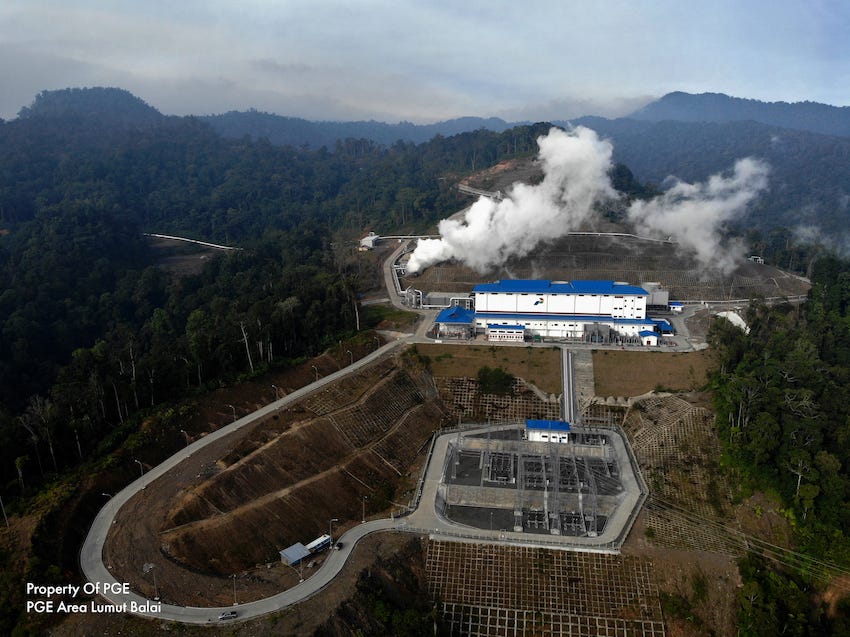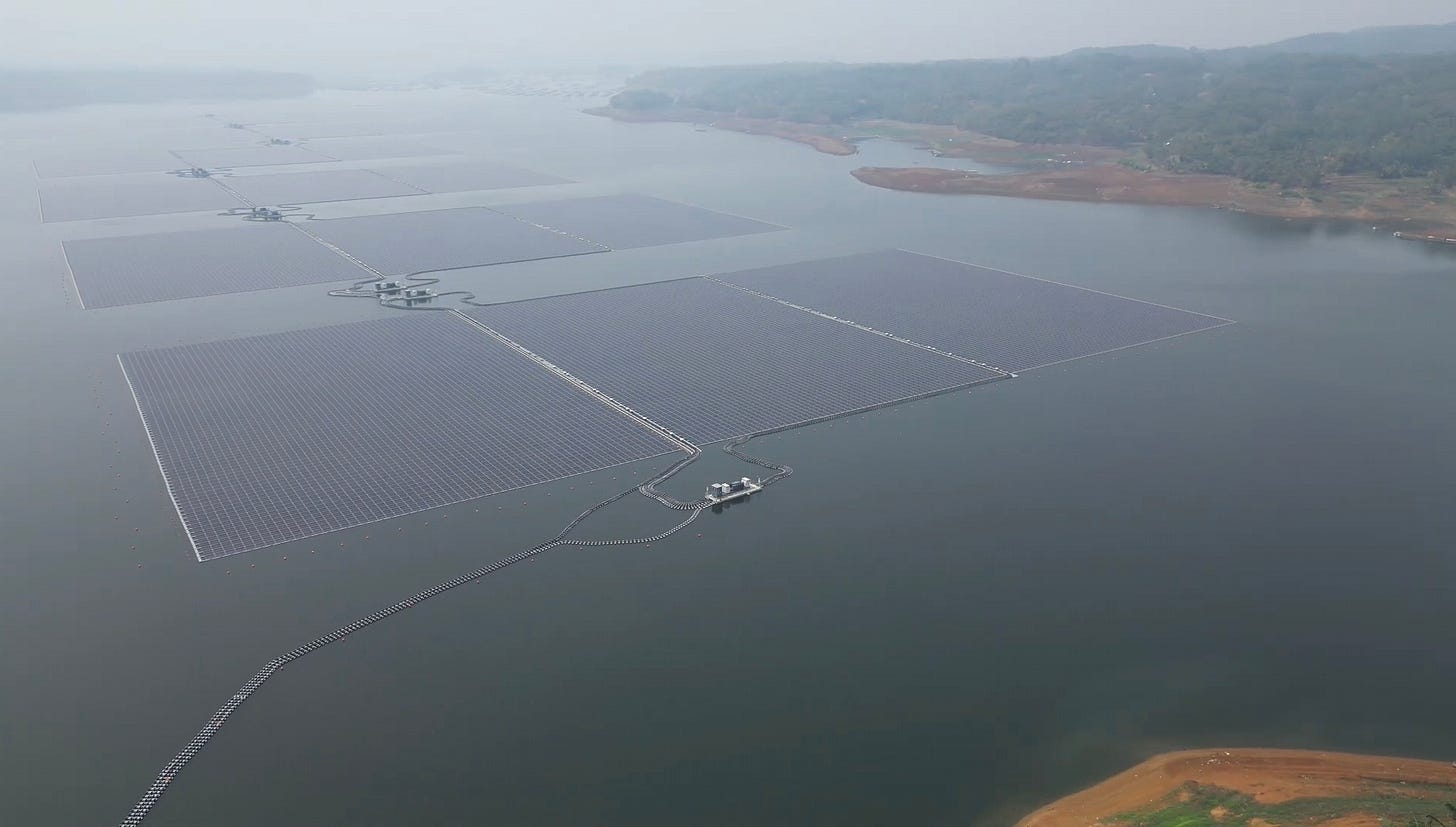Can Indonesia achieve net zero emissions by 2060? 🌱🇮🇩⚡
The country aims to reach 61% renewable electricity by 2025-2034

The Main Takeaway 🎯🌱
Indonesia 🇮🇩 is reinforcing its commitment to renewable energy ⚡ as part of its goal to achieve net-zero emissions by 2060 🌏.
The government is preparing an energy plan for 2025–2034 🗓️ to achieve this target — focusing on collaboration with local and foreign investors 🤝 and simplifying regulations 📑 to accelerate the energy transition 🚀.
Why It’s On Our Radar 🔍🌏
🛢️ Fossil fuels still account for around 80% of global energy demand, anchoring global stability but at a high environmental cost.
🌫️ Their use releases large amounts of greenhouse gases, especially carbon dioxide (CO₂) — the main driver of climate change ⚠️.
🌍 In response, 195 parties, including Indonesia, adopted the Paris Agreement in December 2015, committing to reduce greenhouse gas emissions by 43% by 2030 🕊️🌱.
Why It Matters ⚠️💡
⛽ Fossil fuels are finite — oil and gas may run out in 50–60 years, and coal in 75–100 years ⏳ — pushing nations to seek new energy sources to meet growing demand 🔋.
📊 According to Indonesia’s Ministry of Energy and Mineral Resources (ESDM), in 2024, Indonesia produced 212 million barrels of oil but imported 330 million, causing a foreign exchange loss of about USD 50 billion (USD 1 = IDR 16,000) 💸.
🪨 In the same year, Indonesia produced 836 million tons of coal — 555 million exported, 233 million used domestically (including 131 million for power generation) ⚡, and 48 million stored as reserves.
🌱 Globally, green energy and green industry are now at the center of international discussions, with renewable energy products increasingly valued higher than fossil fuels 🌍💚.

The Big Picture 📸🌏
⚡ According to the ASEAN Centre for Energy, the region targets a 23% share of renewable energy in total primary energy supply by 2025, rising to 70.2% by 2050 🔋🌿.
📈 The Economic Research Institute for ASEAN and East Asia (ERIA) projects 1.6 TW of renewable capacity by 2050 and 1.9 TW by 2060, accounting for 62% and 56% of total power generation, respectively ⚙️.
🌞 ASEAN’s renewable capacity is expected to grow from 124.61 GW (2025) to 178.06 GW (2030), with energy demand increasing about 3% per year until 2030 📊.
🇮🇩 To align with this vision, Indonesia aims for net-zero emissions by 2060 and is preparing the 2025–2034 Electricity Supply Plan (RUPTL) to add 69.5 GW of power capacity, with 61% (42.6 GW) coming from renewable sources 🌱.
💰 According to the Indonesian Chamber of Commerce (KADIN), the renewable energy sector presents USD 3.8 trillion in investment opportunities — roughly 4% of Indonesia’s total GDP from 2025 to 2050 🚀.
What’s at Stake ⚖️⚡
💰 The renewable energy transition demands massive investment. The International Energy Agency (IEA) estimates that the Asia-Pacific region must triple its investment — from USD 770 billion in 2020 to USD 2.3 trillion by 2030 🌏📈.
🇮🇩 For Indonesia, this means securing USD 20–25 billion annually 💸 to develop geothermal, solar, and hydropower energy sources 🌞🌊🔥.
🔌 The country also needs to construct 47,758 circuit kilometers (≈ 8,000 km) of transmission lines 🏗️ to deliver power efficiently from remote renewable energy sites to consumers across the archipelago ⚡🏝️.
Regional Stakes 🌏⚡
🎯 Follow the target: ASEAN nations must achieve 23% renewable energy in total power supply by 2025 and 70.2% by 2050 — a crucial benchmark for regional sustainability and competitiveness.
⛽ Reduce fossil fuels: Member states need to cut fossil fuel use and imports (oil, coal) to curb emissions and environmental damage, while optimizing Clean Coal Technology (CCT) and Carbon Capture, Utilization, and Storage (CCUS) — paving the way toward a low-carbon economy 🌱.
🔌 Build a regional power grid: Expanding the ASEAN Power Grid is essential to boost electricity trade, strengthen grid resilience, and facilitate clean energy integration across borders 🤝.
🌞 Diversify energy: The region must broaden its energy mix — investing more in solar, wind, hydro, and geothermal — to reduce dependence on fossil fuels and increase energy security 🌬️🌊🔥.
💼 Collaborate and invest: ASEAN should foster regional partnerships to explore renewable potential, create shared roadmaps, and mobilize private sector investment to scale up clean energy projects 💰.
🧾 Simplify policy: Governments need to streamline regulations and licensing to make renewable projects more investor-friendly, encouraging faster adoption and technological innovation 🚀.
Why This Hits Home ❤️⚡
🌏 ASEAN’s untapped power: The region holds more than 7,000 GW of renewable energy potential — from solar, wind, hydro, and geothermal sources across its member states.
🇮🇩 Indonesia leads in potential: With around 3,687 GW of renewable energy resources 🌞🌬️🌊🔥, Indonesia could be a cornerstone of ASEAN’s clean energy future.
⚙️ But usage remains minimal: Only 0.4% — roughly 14.75 GW — is currently harnessed for electricity, leaving vast room for investment and innovation 💡💰.
📈 Slow progress: By mid-2025, Indonesia’s renewable capacity had grown just 15%, reaching 867.5 MW, up from 761.9 MW at the end of 2024 — signaling both effort and urgency for stronger acceleration 🚀.
Beyond the Headlines 🧭🌱
🔥 Geothermal giant: Indonesia holds 24 GW of geothermal potential — nearly 40% of the world’s total — positioning it as a global hotspot for clean energy investment and collaboration 🌋🤝.
🌏 Global ranking: With 2.6 GW installed in 2024, Indonesia ranks second worldwide in geothermal capacity, behind the United States (3.9 GW) and ahead of the Philippines (1.9 GW) ⚙️.
☀️ Solar village vision: The government plans to build 80 GW of solar power across 80,000 villages (≈ 1 MW per village) — a project now under feasibility study — to ensure nationwide electrification through renewables 🌞🏘️.
🗑️ Turning waste into watts: A waste-to-energy initiative using garbage from 33 cities is in preparation, requiring IDR 91 trillion (≈ USD 5.7 billion) in investment — a bold step toward cleaner cities and circular energy systems 🔋♻️.
The Bottom Line 👉🌍
⚖️ The world still relies on fossil fuels to maintain energy stability during the global transition toward renewables — making a balanced approach essential between resilience and sustainability.
🇺🇸 However, the U.S. withdrawal from the Paris Agreement on January 21, 2025, one of its original initiators, has shaken global confidence in collective climate action — putting greater responsibility on regions like ASEAN to lead by example in the renewable energy transition 🌱⚡.
(NGO/QOB)




